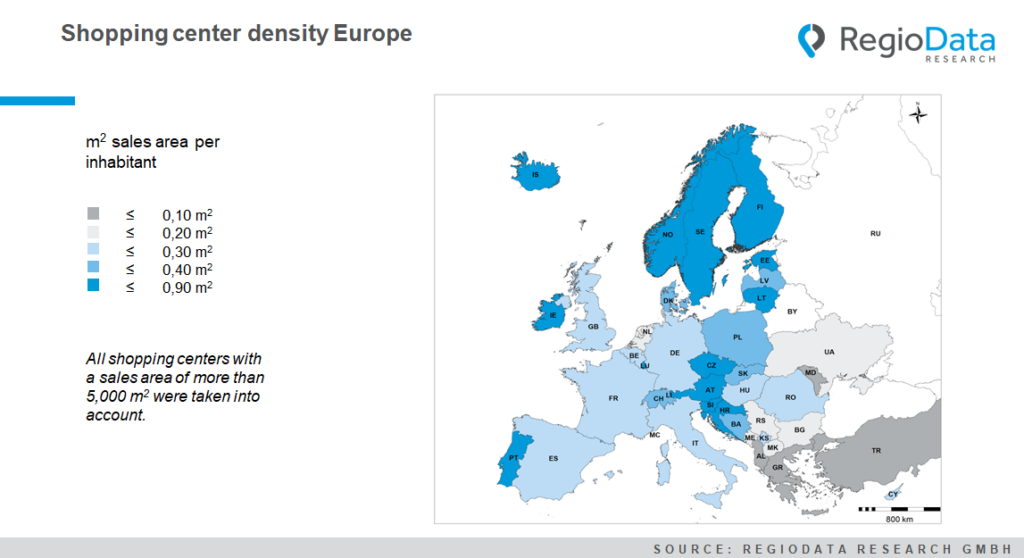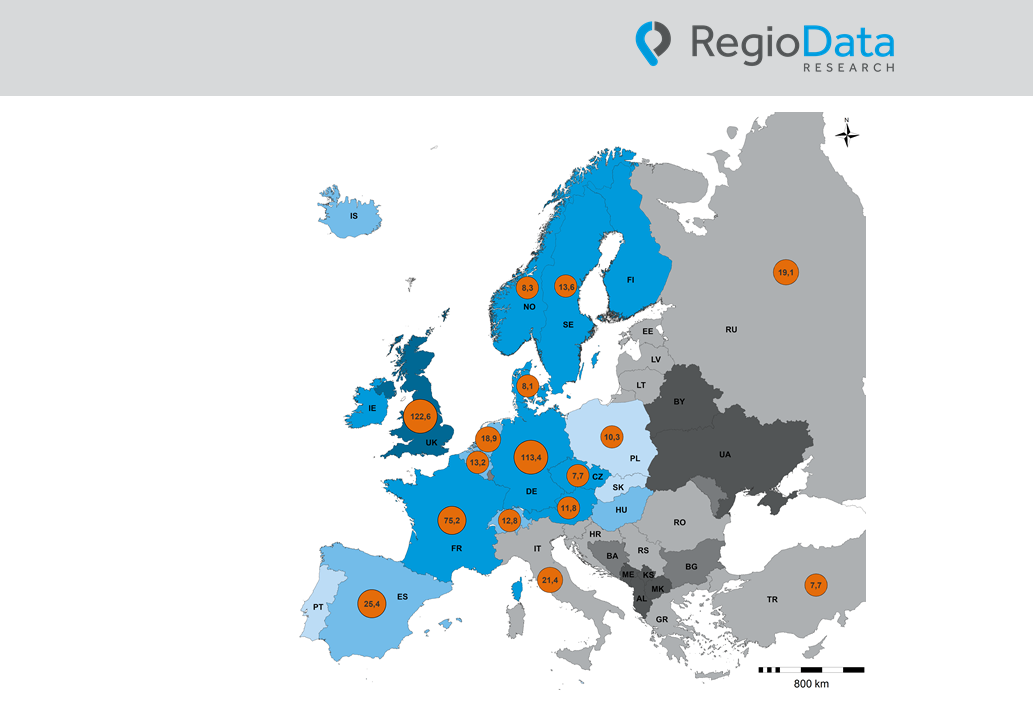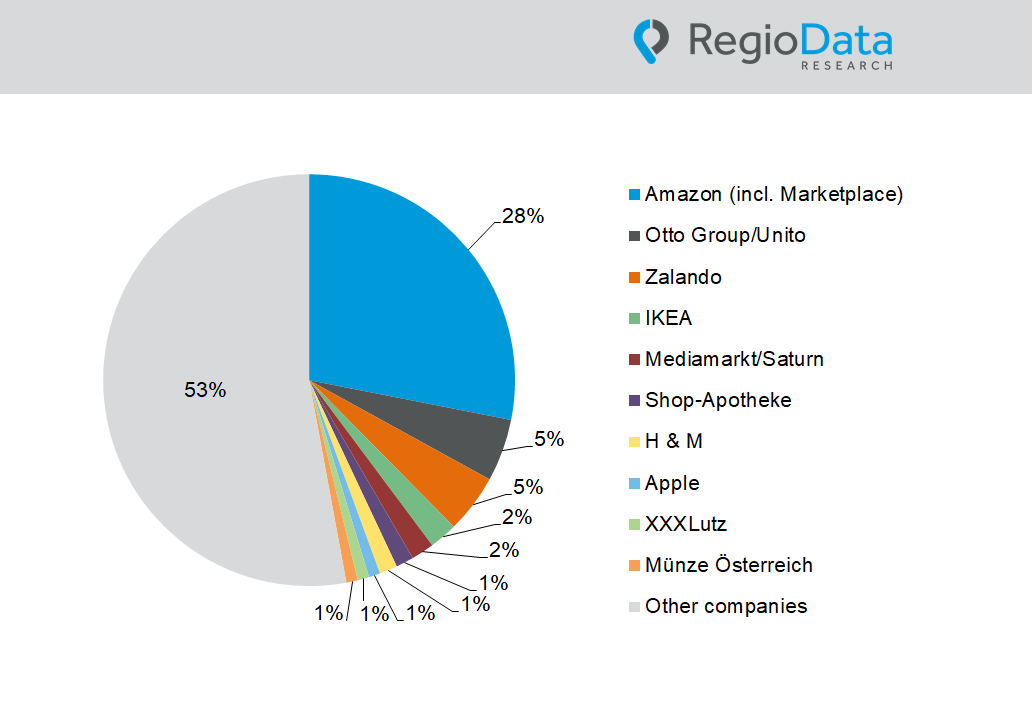Europe
European shopping center density- Quo Vadis?
The shopping center landscape is facing many challenges such as market saturation, stagnant development, high vacancy rates, frequent tenant turnover, and growing competition from online retail.
The Europe-wide overview of shopping center density in m2 per inhabitant shows exactly how shopping centers are organized in each country. Especially the north stands out in this respect, because highest density of retail spaces in Europe is on Scandinavian soil. However, Monaco is currently the undisputed leader with a sales area of 1.6 m2 per inhabitant, followed by Sweden and Norway with a shopping mall density of 0.9 m2. Together with Finland, the average leasable area of the Scandinavian trio is between 16,000 and 22,000 m2. This veritable “boom of the northern retail zones” is due, among other things, to the prevailing climatic conditions in northern Europe and a smaller urban area in direct European comparison. Conversely, Greece, with its numerous scattered islands, cannot compete in terms of sales area density and therefore has some of the lowest figures in Europe.
In addition to the topographical factor, purchasing power plays a key role in interpreting sales area density. Countries with high purchasing power, especially Austria, Switzerland and Luxembourg, also have a higher average shopping center density of 0.4 to 0.9 m2 of retail space per inhabitant. Austrian shopping centers have an average 19,000 m2 of commercial space. Swiss malls are somewhat smaller, with an average of 14,000 m2.
As a result, Northern and Central Europe can position themselves as shopping mall frontrunners. Much more surprising, however, is Croatia’s shopping center expansion. With a comparatively lower purchasing power in Central Europe, Croatia nevertheless plays in the upper midfield of European sales area density.Am Ende der Kette befinden sich kaufkraftärmere Volkswirtschaften, vor allem in Südeuropa, wie Albanien, Moldawien sowie die Türkei.
The fact that even Corona cannot completely conquer the shopping center journey can be seen very well in the recent past. A look into the future, however, reveals one keyword above all: optimization.
In the future, shopping malls should be repurposed into a holistic experience, and in doing so, the strong association with retail should be, at least partly, relegated to the background. While this step loosens generational roots and redefines the concept of shopping malls, it practically repurposes them to create a new and more generationally adequate source of leisure and retail experience. There is definitely enough room for prosperity!
share post




